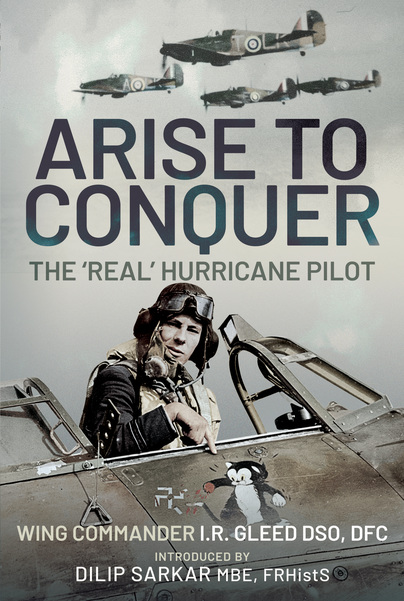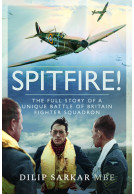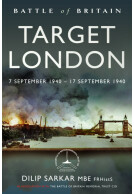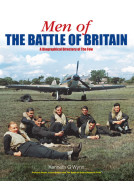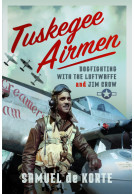Arise to Conquer (Hardback)
The 'Real' Hurricane Pilot
Imprint: Air World
Pages: 272
Illustrations: 80 black and white illustrations
ISBN: 9781399017107
Published: 11th May 2022
(click here for international delivery rates)
Order within the next 6 hours, 6 minutes to get your order processed the next working day!
Need a currency converter? Check XE.com for live rates
| Other formats available - Buy the Hardback and get the eBook for £1.99! | Price |
|---|---|
| Arise to Conquer ePub (25.0 MB) Add to Basket | £6.99 |
Born in 1916, after learning to fly as a civilian, Ian Richard Gleed was granted a RAF commission in 1936. He completed training on Christmas Day that year, being posted to 46 Squadron which was equipped with the Gloster Gauntlet.
Through much of his RAF service the diminutive Gleed was known as ‘Widge’, short for ‘Wizard Midget’ on account of his excessive use of the word ‘wizard’ to describe something ‘topper’, and his short stature. Rising from Flight to Squadron Commander in short order, and later taking over the Ibsley Spitfire Wing in 1941, Gleed was enormously popular with his peers. Indeed, Wing Commander ‘Bunny’ Currant once described Gleed as a ‘pocket-sized man with care for others and courage beyond compare’.
Having been decorated with the coveted ‘double’ of both DSO and DFC, Wing Commander Gleed went out to lead a wing in Tunisia. It was there that he was shot down and killed on 16 April 1943. By this time, he had achieved the status of being a fighter Ace, having been credited with the destruction of thirteen enemy aircraft.
The previous year, Gleed’s wartime memoir, Arise to Conquer, was published by Victor Gollancz. Eloquently written and detailed, this book is a superb first-hand account of one man’s life and times as a fighter pilot – mainly flying the Hawker Hurricane – during the Fall of France, the Battle of Britain and beyond into the night Blitz.
Reprinted here in its entirety, and extensively introduced by the renowned aviation historian Dilip Sarkar MBE, FRHistS, this edition of Arise to Conquer is supported by a remarkable set of wartime images. Among Gleed’s Hurricane pilots on 87 Squadron during the Battle of Britain and beyond was Sergeant Laurence ‘Rubber’ Thorogood, a keen photographer who is often mentioned in this book. Along with his Commanding Officer’s words, Rubber’s unique personal photograph album, containing as it does a number of images of Gleed, provides a rare glimpse of a fighter squadron at war during our Darkest – yet Finest – Hour.
Featured in
Scramble 1940 - Official Newsletter of the Battle of Britain Historical Society, Autumn/Winter 2022, Issue 166
Dilip has in many ways brought Ian Gleed back to life, filling in personal details, and history that was otherwise not in the public arena, and with the addition of the wonderful images in the last chapter, you can look and gaze in awe, at these young men, upon whose shoulders we placed so much, It is almost an Arthurian tale, the Knights of the round table did not desert us, but came back when we called, that they grasped a modern weapon rather than a sword in no way diminishes their valour.
ARRSE (Army Rumour Service)
I found this a fascinating book, and had to read it twice, as I enjoyed every detail, my elderly father as a schoolboy hero worshipped these young men, and in no way was that misplaced.
To any one who is interested in the second world war, or interested in exactly how those fine aircraft performed in these young hands, this book is a must.
Read the full review here
Rating: 5 out of 5 stars
NetGalley, Mark Lardas
A Pilot’s View of the Battle of Britain
Ian Richard Gleed was one of Churchill’s few, the RAF fighter pilots who fought the Battle of Britain and defeated the Luftwaffe. He put his experiences down on paper, detailing his experiences during the Battle of France, The Battle of Britain, and the 1941 nighttime Blitz.
“Arise to Conquer: The ‘Real’ Hurricane Pilot,” edited by Dilip Sakar is a new release of this classic. Sakar adds an extensive introduction, framing this forgotten story for the modern reader. It also contains footnotes that explain Gleed’s slang and technical terms which might baffle today’s readers.
Gleed’s memoirs were originally published in 1942. It was one of the earliest first-person accounts of the battle available to the public. Although fictionalized, it shows what it was like to be a fighter pilot during the opening days of World War 2. You experience Gleed’s triumphs, terrors, and disappointments.
He gives the cockpit view of the battles and reveals the tedium associated with air warfare. There were long periods when little happened. He also shows how the pilots lived, waited at ready, and released steam during their leaves and free time. This includes a look at his family.
As history it is unreliable. The fog of war led Gleed to make mistakes. Operational security prevented Gleed from revealing information that might help the enemy. One example: radar is glossed over. Gleed’s squadron keeps stumbling on enemy aircraft. In reality, they were being vectored by radar. Similarly, Gleed fictionalizes his personal life. He was homosexual, but added a non-existent fiancé to distract from this.
Yet “Arise to Conquer” remains worth reading. The focus is on Gleed and pilots in Gleed’s squadron. They come across as very young, men who have just become men, and are far more innocent than those of that age today.
During most of the period related in this book, Gleed flew Hurricanes. This included night fighter and bomber missions. He rose from flying officer to wing commander during that period. Gleed was an outstanding fighter pilot, with thirteen enemy aircraft shot down. He died in 1943, shot down in an air battle over Tunisia.
Gleed’s memoir has been republished numerous times since 1942. This edition of “Arise to Conquer” is worth reading for Sakar’s introduction, and also because it contains 60 wartime photos of Gleed’s squadron. These were taken by Sergeant Laurence Thorogood, one of the squadron’s other pilots, known as “Rubber” in the book.
This review was written by Mark Lardas who writes at Ricochet as Seawriter. Mark Lardas, an engineer, freelance writer, historian, and model-maker, lives in League City, TX. His website is marklardas.com.
This was a really good book to read, a book about a group of Hurricane pilots during WW2, their lives, training, flying and everyday life from a first-hand account, by Wing Commander I. R. Gleed DSO, DFC. In a way this a great history book because it tells the stories and daily experiences of the ‘man’ on the ground doing the job.
The History Fella
Read the full review here
Rating: 5 out of 5 stars
NetGalley, Ron Baumer
A great biography regarding one of the great pilots for the RAF during WW2. The story is full of action and full of great stories about the pilots and the ordeals they endured. A must read for the air enthusiast.
Rating: 5 out of 5 stars
NetGalley, David Leslie Urion
A marvellous, well-written first hand account of a war hero and his air force colleagues that I was previously unaware of. It is an enthralling page turner from start to finish, and provides a timeless poignant snapshot of how Britain was just before WW2 up to the middle of the war. Not only does it detail the true diary of the brave men who fought against seemingly insurmountable odds in Spitfire and Hurricane squadrons and somehow succeeded, but also gives in an insight into the lifestyles of young ex-public / grammar school boys who lived each day to the max because they were never sure whether it would be their last. This book should appeal to military historians as well as anyone interested in the social history of Britain in turbulent times.
About Dilip Sarkar MBE FRHistS FRAeS
Dilip Sarkar has now written over sixty well-received books. Having enjoyed a privileged relationship with many of The Few, he is a globally acknowledged expert on the Battle of Britain, currently working on a career-topping eight volume official history for The Battle of Britain Memorial Trust and National Memorial to The Few. Described by the late Dr Gordon Mitchell, son of the Spitfire’s designer RJ Mitchell, as an ‘aviation detective’, Dilip Sarkar did actually begin his professional life as just that – a police detective. His evidence-based approach and ability to discover new material is well-known – in 2023, for example, he was responsible for having Air Chief-Marshal Sir Keith Park, a New Zealander, officially recognised as one of The Few. Made an MBE for ‘services to aviation history’ in 2003, Dilip was elected to the Fellowship of the Royal Historical Society in 2006, achieved First Class Honours in Modern History as a mature student in 2010, and in 2024 was made both a Fellow of the Royal Aeronautical Society and member of London’s Royal Air Force Club. During his long career, Dilip has exhibited and spoken internationally at such prestigious venues as Oxford University, the RAF Museum, IWM Museum, and Airborne Museum, Oosterbeek; he has worked on many TV documentaries, on and off screen, again internationally, and has an engaging presence on YouTube and Facebook in particular.







